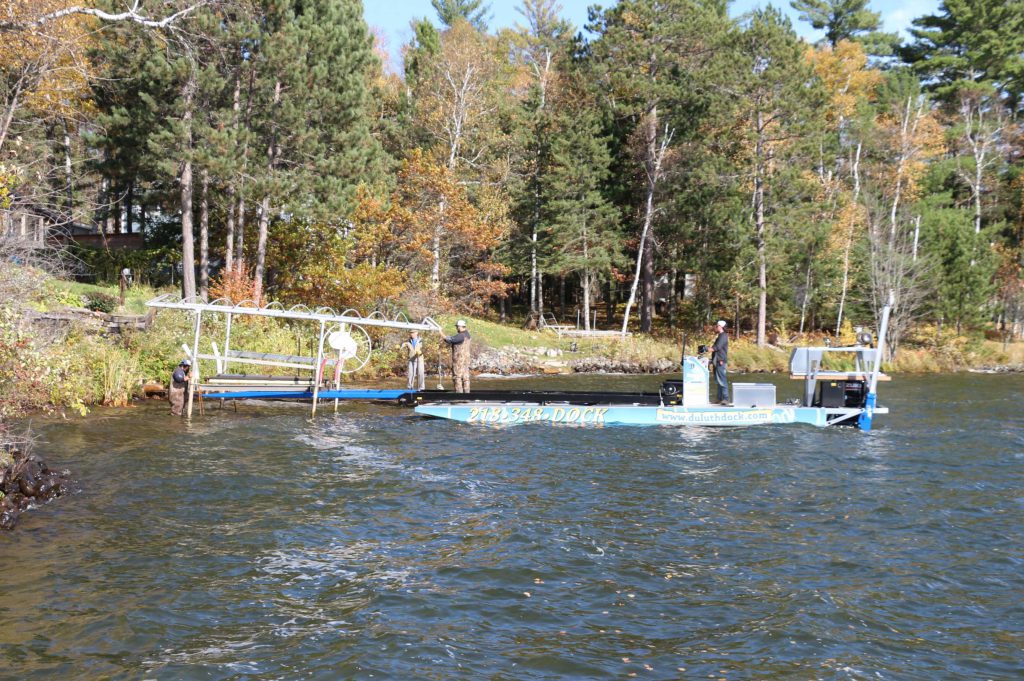Comprehending the Expenses Involved in Dock Repairs
Reliable Dock Fixing Techniques: Making Certain Architectural Honesty
Making certain the structural honesty of docks with reliable fixing techniques is critical for the durability and safety and security of aquatic facilities. Ultimately, choosing the right repair service products, such as corrosion-resistant alloys and composite materials, is crucial for sturdiness.
Examining Dock Damage
Evaluating dock damages is a critical first step in guaranteeing the structural stability and safety and security of any docking facility. Key aspects to analyze include the dock's foundation, pilings, decking, and hardware (Dock Repairs).
Structural engineers or qualified inspectors usually do these analyses using specialized tools and methods. As an example, underwater assessments may utilize finder devices or from another location ran lorries (ROVs) to detect immersed damages. Over water, visual evaluations are matched by utilizing moisture meters and various other analysis tools to reveal underlying concerns not immediately visible to the naked eye.

Deciding On Repair Materials
Picking the suitable fixing materials is a pivotal action in the dock remediation procedure, one that directly affects the longevity and performance of the fixed framework. Material selection need to be driven by elements such as ecological conditions, load-bearing needs, and compatibility with existing dock components. As an example, timber is a typical selection for docks as a result of its all-natural resilience and aesthetic appeal. Nonetheless, selecting the ideal kind of timber, such as pressure-treated lumber or normally rot-resistant varieties like cedar or teak wood, is critical to withstand marine environments.
Along with timber, composite materials are significantly popular due to their durability and low maintenance needs. Compounds, normally made from a mix of plastic and timber fibers, supply superb resistance to rot, pests, and UV damages. For steel docks, choosing corrosion-resistant alloys such as galvanized steel or marine-grade light weight aluminum is necessary to stop rust and make certain structural integrity in saline water problems.
Epoxy materials and marine-grade sealants are crucial for repairing splits and sealing joints, giving a waterproof obstacle and enhancing the dock's total stamina. By thoroughly choosing high-quality materials, dock repair work can accomplish durable results, consequently safeguarding against future deterioration and ensuring risk-free, reputable use.
Structural Reinforcement Strategies
Effective structural support strategies are critical in guaranteeing the security and durability of dock repair services. This method is particularly effective for docks revealed to heavy lots or extreme environmental conditions.
Another crucial strategy is the application of fiber-reinforced polymers (FRP) These products use high strength-to-weight ratios and outstanding resistance to corrosion, making them excellent for enhancing concrete or wooden anchors. FRP can be used in sheets or strips and bound with epoxy resins to boost structural honesty.
Supporting and anchoring systems also play an important role in structural support. Cross-bracing, utilizing metal or wood beam of lights, can neutralize side forces, reducing guiding and motion. Anchoring systems, such as helical piers or driven stacks, offer a steady you could try these out foundation by moving loads to deeper, much more stable soil layers.
Finally, the integration of load-distribution plates can help disperse weight much more evenly throughout the dock's surface area, alleviating local anxiety factors. These methods collectively make certain that anchors continue to be risk-free and robust, with the ability of standing up to the rigors of their functional environment.
Advanced Fixing Methods

Another innovative strategy entails undersea welding, which enables fixings to be conducted without the requirement to dewater the location. This technique is especially useful for addressing architectural issues in submerged dock elements, guaranteeing marginal disturbance to operations. Enhanced welding techniques, coupled with robot systems, deliver accuracy and dependability, thereby prolonging the lifespan of the dock.
In addition, cathodic defense systems are implemented to avoid deterioration in metallic dock structures. By making use of sacrificial anodes or satisfied present systems, these techniques effectively minimize the electrochemical procedures that result in material damage.
Last but not least, advanced monitoring modern technologies, such as structural health tracking (SHM) systems, offer real-time data on the problem of dock structures. These systems make it possible for positive maintenance and prompt interventions, ultimately making certain the long-lasting structural integrity of the dock.
Upkeep and Prevention
Maintenance and avoidance are essential concepts that underpin the longevity and safety and security of dock frameworks. Regular inspections are extremely important, enabling early detection of damage, prospective weaknesses, and ecological effects. A positive method, entailing regular checks for deterioration, rot, and architectural changes, minimizes expensive repairs and prolongs the dock's functional life.
Safety nets must consist visit this site of using protective coverings to steel elements to guard versus rust and using cured wood to withstand degeneration. Furthermore, making certain appropriate drainage and ventilation can protect against water accumulation, which is a typical reason for architectural destruction. Incorporating top quality materials and adhering to maker standards during building and repair service stages also play vital duties in enhancing toughness.

Educating employees in dock upkeep ideal techniques ensures consistent application of preventive steps. Leveraging technical developments, such as drones for assessments and sensing units for real-time surveillance, can better boost upkeep initiatives. By prioritizing maintenance and avoidance, dock proprietors can make certain architectural honesty, functional security, and cost-efficient management over the dock's lifespan.
Conclusion
In conclusion, preserving the architectural honesty of marine centers necessitates extensive dock repair service techniques. Advanced repair work methods, coupled with routine maintenance practices, guarantee the dock continues to be functional and risk-free under diverse environmental conditions.
Making certain the architectural integrity of anchors through effective repair strategies is critical for the long life and security of marine centers.Choosing the blog here suitable repair work materials is a crucial step in the dock reconstruction process, one that directly affects the long life and efficiency of the fixed framework.Efficient architectural reinforcement methods are vital in making sure the security and durability of dock repair work. By prioritizing maintenance and prevention, dock owners can ensure structural honesty, functional security, and affordable administration over the dock's lifespan.
In conclusion, maintaining the architectural honesty of aquatic facilities requires extensive dock repair work techniques.